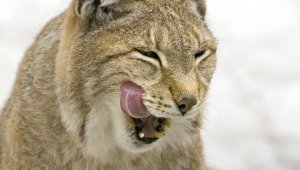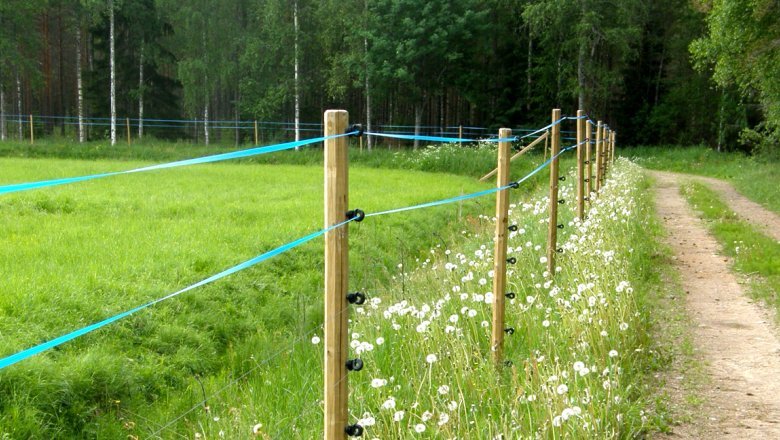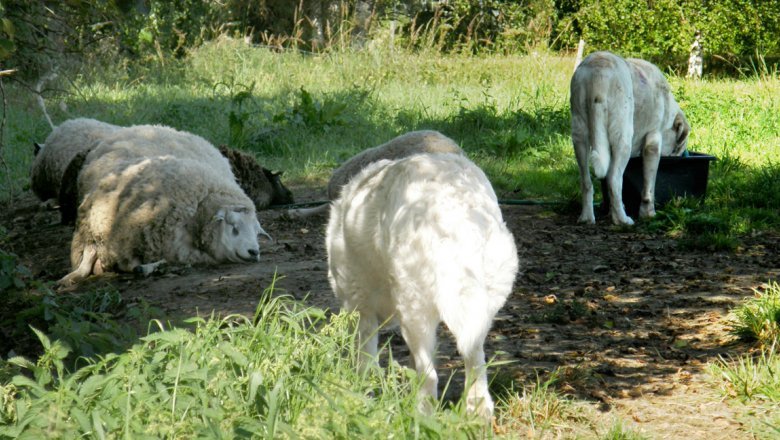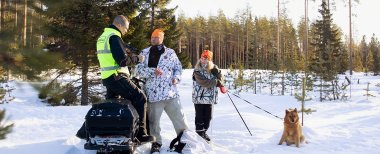Electric fences and night shelters are effective in preventing large carnivore attacks
Electric fences have been observed to significantly reduce large carnivore damages in pastures and around beehives. Only a few individual cases are known where a large carnivore has attacked a domestic animal despite an electrified fence. In these cases the fence has usually been underpowered or poorly managed, or the large carnivore has dug its way under the fence. The other preventive option is a non-electric anti-predator fence.
Animal owners may apply for subsidies for fence materials from the Finnish Wildlife Agency. It is the applicant's responsibility to set up and maintain the fence. Initially, the applicant rents the fence from the Wildlife Agency with a 5-year rental agreement. Once the agreement expires, the applicant becomes the owner of the fence. Bee fences are a very cost-effective way to protect bee yards from bear damages. Acquiring the fence's power supply is the responsibility of the animal farmer.
Bringing animals in for the night, increased supervision and active herding in pastures are effective ways of reducing large carnivore damages, but they also add to the farmer's workload.
Compressed air guns frighten predators away
The Finnish Wildlife Agency has purchased compressed air guns for scaring away large carnivores that venture too close to populated areas. A hit from such a gun causes the animal enough pain that it runs away and doesn't return to the same location. The results have been positive and plans have been made to purchase these guns for all regional offices of the Finnish Wildlife Agency.
Protecting dogs
A dog pen with a sturdy and high-enough fence is an effective way of protecting dogs from wolves. Protecting a dog in a hunting situation is a bit more difficult. Hunters could try to avoid known wolf areas when hunting with a dog. Different wolf hotlines have been founded in Finland, Sweden and Norway to give hunters information on the territories of tracked wolves.
National Resources Institute Finland (Luke) also has an online service that aims to prevent hunting-related attacks on dogs by providing wolf location data gathered from GPS-collared wolves. However, running this service requires additional resources so that the movements of the wolves could be monitored as accurately as possible. GPS tracking information was available for the hunting season 2012–2013, but the same data could not be offered for the 2014–2015 season as wolves couldn't be collared because of the poor snow situation. The intention is to offer the data again for the 2015–2016 season, provided that enough wolves can be collared.
Different protective equipment for dogs, such as pepper vests and protective collars, have also been tried in some countries. Different types of protective vests have also been developed in Finland, but so far the work has not resulted in a product that has seen widespread use among hunters. The trials are set to continue, however.
Currently the large carnivore sightings reported in Finland may be viewed online at Luke's service (riistahavainnot.fi) where the sightings entered into the Tassu sighting system are displayed on a map. It is very important in damage prevention to not teach large carnivores to seek food near human habitation. The carnivores must not be fed near residential areas and food that interests large carnivores must be kept out of their reach.
In reindeer herding areas with strong predator populations, reindeer damages may be prevented by increasing supervision in calving areas, keeping calving females in enclosures and increasing the feeding of reindeer. Bringing reindeer into a paddock for the winter is also a possibility in areas with a high risk of predator attacks during the winter grazing period.
The Finnish Game and Fisheries Research Institute (now known as National Resources Institute Finland) began a three-year project in 2014 for charting reindeer damages caused by our large carnivores, especially the wolverine. This project aims to find out how many reindeer are killed and how healthy the reindeer are in herding districts with the most wolverine attacks and discover ways in which the damages could be prevented. Other types of data are also collected, such as information on wolverine behaviour and their numbers in the area.
Sound can also function as a deterrent
Different sound and light sources are also ways to scare off large carnivores to prevent damages. A radio placed on the fence of a calving enclosure playing rock & roll might keep large carnivores away from the area, for example. In acute situations one can try to intimidate the predators in different ways, including shouting, using a dog or firing blanks. Getting rid of food sources that might attract large carnivores near pastures or enclosures is also important. The last line of defence, when all other methods have failed, is to apply for an exceptional hunting permit from the Finnish Wildlife Agency to remove the troublesome animal.



